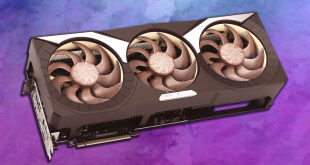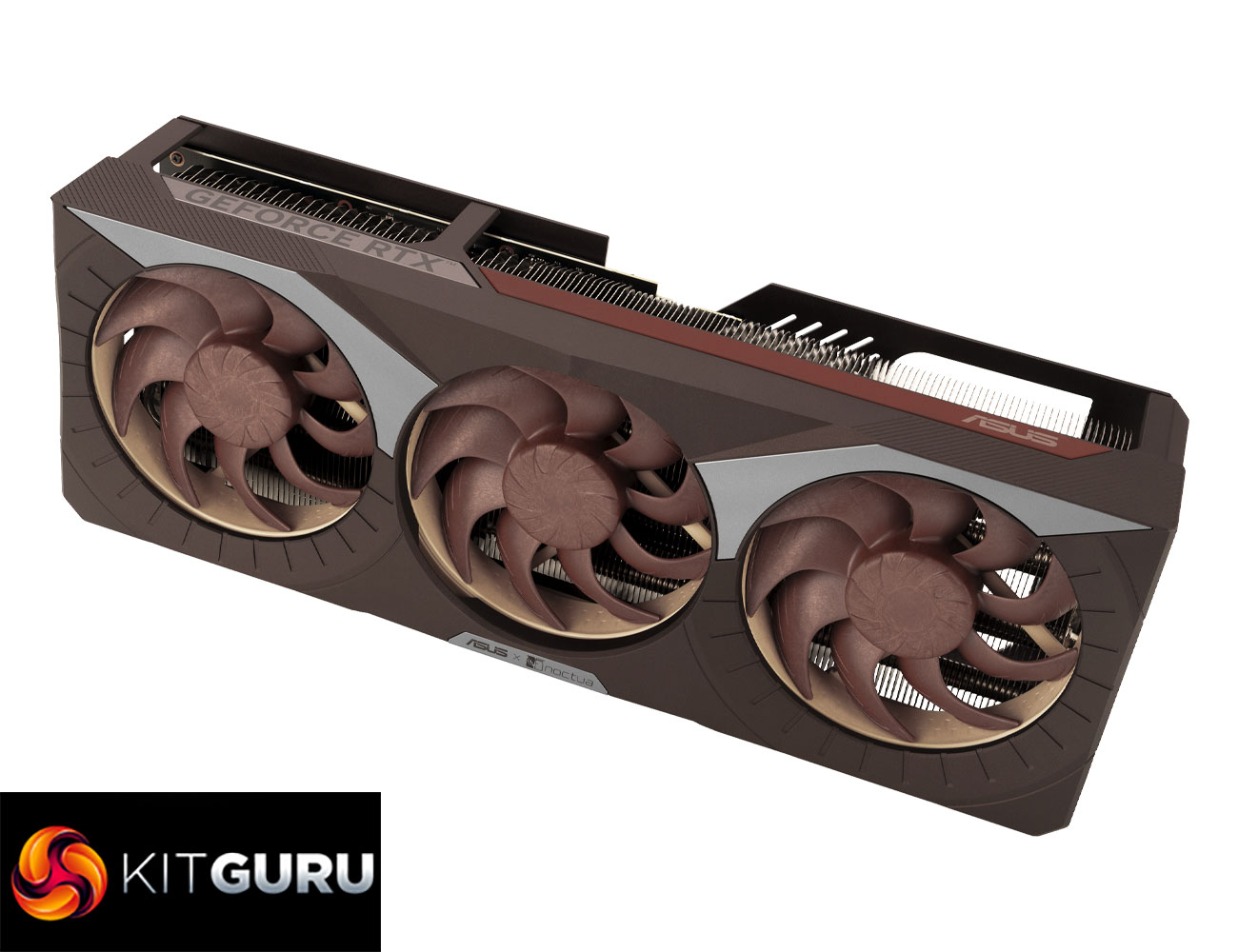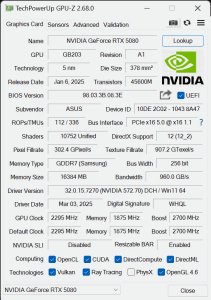
It has been some time since we last reviewed a graphics card from ASUS, let alone one of the Noctua Edition models, but that is exactly what we are checking out today. First shown at Computex 2025 but officially launched this month, the ASUS RTX 5080 Noctua Edition is the biggest card we have ever reviewed here at KitGuru, packing in a quad-slot cooler, alongside three 120mm NF-A12x25 G2 fans and a heatsink that sports no less than eleven heatpipes. ASUS and Noctua are clearly aiming for near-silent operation, so let's see how it performs…
As you may have guessed, all of that engineering work does not come cheap, and this is far and away the most expensive RTX 5080 I have ever seen, listed at £1500 over on Scan. During the process of this review, we actually saw Nvidia drop the price of its RTX 5080 Founders Edition to £909, meaning the ASUS RTX 5080 Noctua Edition commands a whopping 65% premium over the MSRP. Can any graphics card justify that sort of price increase? Let's find out.
| RTX 5090 | RTX 5080 | RTX 4090 | RTX 4080 Super | RTX 4080 | |
| Process | TSMC N4 | TSMC N4 | TSMC N4 | TSMC N4 | TSMC N4 |
| SMs | 170 | 84 | 128 | 80 | 76 |
| CUDA Cores | 21760 | 10752 | 16384 | 10240 | 9728 |
| Tensor Cores | 680 | 336 | 512 | 320 | 304 |
| RT Cores | 170 | 84 | 128 | 80 | 76 |
| Texture Units | 680 | 336 | 512 | 320 | 304 |
| ROPs | 176 | 112 | 176 | 112 | 112 |
| GPU Boost Clock | 2407 MHz | 2617 MHz | 2520 MHz | 2550 MHz | 2505 MHz |
| Memory Data Rate | 28 Gbps | 30 Gbps | 21 Gbps | 23 Gbps | 22.4 Gbps |
| L2 Cache | 98304 KB | 65536 KB | 73728 KB | 65536 KB | 65536 KB |
| Total Video Memory | 32GB GDDR7 | 16GB GDDR7 | 24GB GDDR6X | 16GB GDDR6X | 16GB GDDR6X |
| Memory Interface | 512-bit | 256-bit | 384-bit | 256-bit | 256-bit |
| Memory Bandwidth | 1792 GB/Sec | 960 GB/Sec | 1008 GB/Sec | 736 GB/Sec | 716.8 GB/Sec |
| TGP | 575W | 360W | 450W | 320W | 320W |
First, a quick spec recap. Unlike the RTX 5090, which is built on the GB202 die, RTX 5080 uses smaller silicon as it is a full implementation of the GB203 die, measuring 378mm2. Comprised of 7 Graphics Processing Clusters (GPCs), each holds up to eight Texture Processing Clusters (TPCs), with a total of 42. Each TPC is home to two Streaming Multiprocessors (SMs), giving us 84, and each SM still holds 128 CUDA Cores, meaning the RTX 5080 has a total of 10752 shaders. We also find 84 RT cores, 336 Tensor cores, 336 Texture Units, and 112 ROPs.
This time around, however, there's no node-shrink, and GB203 remains fabricated on TSMC's N4 node, as per the RTX 40-series. As such, rated clock speed is barely changed this generation, with the RTX 5080 rated at 2617MHz, compared to the RTX 4080 Super's 2550MHz boost.
The memory configuration is also fairly similar, but sports one key upgrade – GDDR7 memory. The RTX 5080 comes equipped with 16GB, running at 30Gbps, and that puts total memory bandwidth at 960 GB/s, a 30% increase over the RTX 4080 Super. L2 cache remains at 65MB.
Power draw has also increased, with the RTX 5080 sporting a 360W TGP. This is something we focus on closely in this review, using our enhanced GPU power testing methodology, so read on for our most detailed power and efficiency testing yet.
 KitGuru KitGuru.net – Tech News | Hardware News | Hardware Reviews | IOS | Mobile | Gaming | Graphics Cards
KitGuru KitGuru.net – Tech News | Hardware News | Hardware Reviews | IOS | Mobile | Gaming | Graphics Cards




